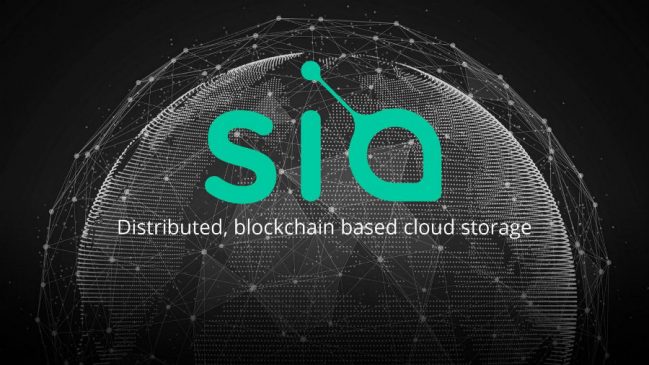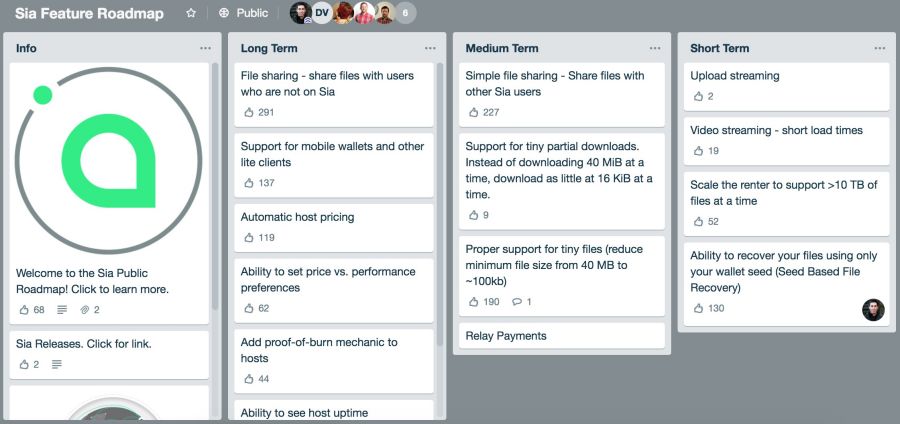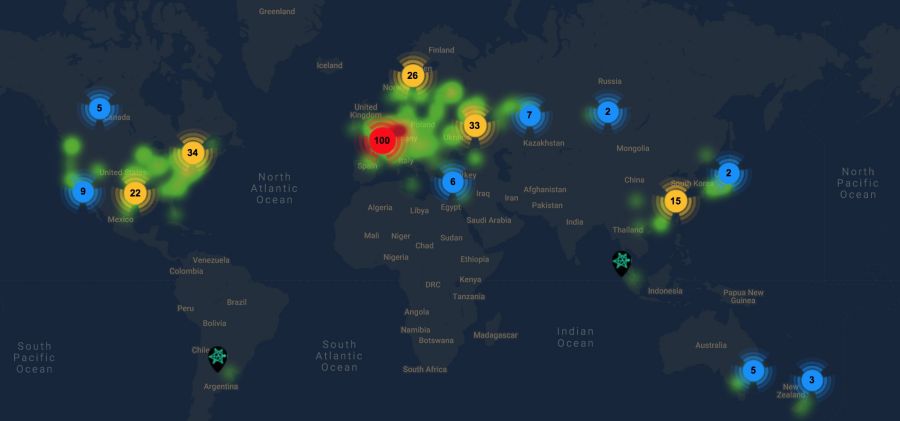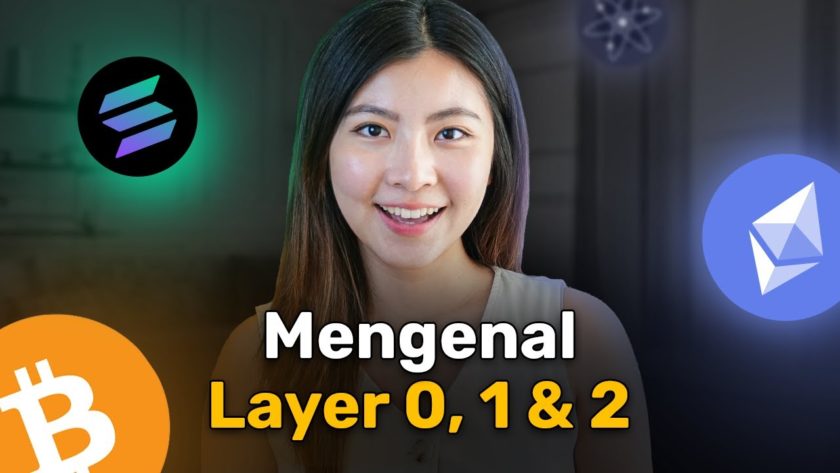Like many of you, I am an investor who is bullish on cryptocurrency and an avid supporter of blockchain. I believe that blockchain can bring about invaluable services that reinvent the way we carry out our daily lives as well as the very fabric of society. It will give governance and ownership rights back in the hands of the individual through transparent, freely auditable networks that put emphasis on individual privacy, removing needless middlemen eating up our time and money for their own benefit.
Amongst the sea of scammy blockchain ventures, there are ambitious projects out there, that promise to deliver practical services for all of us and not just programmers and those already well-versed in the tech. Seeing how heavily our society today relies on data, with how companies are making crazy money from using consumer data to market their services and how reliant the average person is on data storage services, cloud technology is something that will greatly benefit from blockchain disruption.
A real noteworthy decentralized cloud storage that I am now fully onboard with is Sia, and let me tell you why this project is actually worth my money.
What is Sia
Operating since 2015, Sia is a decentralized storage leader with over 300 storage providers, 3.1 PB in capacity, 202 TB of used storage, and highly active communities on Reddit and Discord. Siacoin (SC), used to buy storage capacity from others and received as rewards for storage sellers, is available on virtually all exchanges, ranked #56 on Coinmarketcap, and has been enjoying an overall healthy value growth throughout the years of Bitcoin price surges and falls. The team, based in the U.S. sci-tech city of Boston, develops Sia as the solution to today’s cloud storage options that are heavily skewed against the average consumer.
Utilizing blockchain, Sia connects users in need of file storage with individuals anywhere in the world offering underutilized storage capacity in a peer-to-peer manner without any middleman. You can play both roles – buy storage space from others on the Sia network or lend out your unused space to other network members and earn some Siacoins! Your data is safely logged on the blockchain and transactions occur in a secure, fully automated means using smart contracts. No single person or grubby organization can deny you the rights to your data, as Sia platform disables any attempt to censor or tamper with data rights. The team states that their platform, on average, “costs 90% less than incumbent cloud storage providers as storing 1TB of files on Sia costs about $2 per month compared with $23 on Amazon S3.” It is the core belief of Sia that nobody should “be beholden to large corporations”, which is why they have embarked on this voyage for decentralized data storage. Blockchain technology allows for transparent, auditable, and full accountability for one’s assets and transactions, which is why it is the underpinning pillars of Sia’s cloud platform. The Sia team also states that their long-term goal is “to become the backbone storage layer of the Internet”. There are many blockchain projects that make big promises yet spectacularly fail to deliver in the end, flushing millions of your investments down the drain – and Sia is certainly showing that they are not one of these.
How does Sia’s storage marketplace work
So how exactly does Sia work? Everytime you upload a file to the Sia cloud, it is segmented into many pieces so that no host is a single point of failure, which reinforces overall network uptime and data redundancy.
Sia’s segmentation allows the user to fully restore their file even when only some out of all hosts are online at any given time. All file segments are thoroughly encrypted before being shipped to their respective hosts via smart contracts.
Renters and hosts in the Sia ecosystem use the proprietary Siacoin to carry out deals in file contracts, with the former pre-paying for storage while the latter depositing collateral. As hosts need to stake Siacoins as collateral, they are disincentivized from going offline, ensuring that users will always have access to their files. Payments are then executed off-chain which enhance network scalability and performance.
Overtime, if hosts go offline, Sia automatically moves data segments to new hosts to ensure 24/7 uptime. As a consumer protection measure, the platform also mandates hosts to prove that they are still storing the renter’s data at the end of the file contract – or else they will be penalized.
What’s next for Sia?
The team has a public Trello board detailing its release milestones and future roadmap which includes highlight features such as file sharing with other Sia users as well as non-Sia users (interoperability for the win!), support for mobile wallets, a TestNet launch for Sia blockchain, ability to see host uptime, relay payments, and so much more. Here are the key milestones of Sia team that promise to enhance traction with the consumer market:
- Short term: Video streaming! (upload / receive).
- Medium term: Easy way to share files with other Sia users; support for smaller files, up to 100 KB in size (the current minimum size is 40 MB which is still rather large).
- Long term: Share files with non-Sia users directly (this is great to be supported natively, however now it’s possible through 3rd-party services – read further!); more “siaconomy” adjustments to make price/revenue model more attractive and simple.
Built on Sia for the mainstream market
Sia’s community is very developer-friendly with publicly available documentation, frequent blog updates on product engineering, and various supporting services in its ecosystem including online file storing/sharing solutions PixelDrain and Goobox, both of which are 100% free and you don’t even need to know what Sia is to use them, as well as Repertory for more tech-savvy users, which is a Sia-based mounted drive for your OS.
The project is keeping up with its promises and steadily expanding its ecosystem of values to communities. This is not really something you can say about many blockchain projects out there today.
Where to store Siacoins?
Official fullnode wallet. You can store Siacoins on the fullnode wallet on Sia-UI desktop application. Unfortunately, and this is truly sad for a coin that ranks #56, this official wallet is a fullnode one, meaning it downloads and keeps the entire history of all the transactions and blocks on the Sia network from the very beginning, piece by piece, and verifies each piece along the way. This process is extremely resource-intensive, especially on traditional hard drives, so it can take hours or even days to complete and takes up 15 GB of storage space on your device.
Hardware wallets. For the more security-conscious crowd, Sia has also been integrated with Ledger Nano S hardware wallet for cold storage option.
Third-party wallets. Luckily, Sia community realized the need for light, fast wallet for Siacoins and has developed several of them independently. Since official light wallet support is planned as part of the longer-term development roadmap, currently light wallets require the user’s seed to unlock the wallet before it becomes possible to send Siacoins or check balance. The Wallets also promise to not keep any personal data, meaning everything is deleted when you close the webpage. Named SiaWallet.io and EasySia.com, they’ve been on the market for a while but still, use and at your own risk!
How to earn Siacoins
In short, there are three ways:
- Start renting out your computer’s unused space with Sia-UI client and you’ll earn about $2 per terabyte every month. These numbers might not sound so impressive, but remember that you’re paid in Siacoins which, you know, will probably hit the market price jackpot soon!
- Purchase a professional dedicated equipment to rent out storage space as well as use it for your own needs – Minebox, priced around $1,500 for the 16 TB model.
- Mine it using ASICs! Siacoin is currently the most profitable crypto to mine. Unfortunately, compatible ASICs are available from a single company, Obelisk, and are no longer on sale as it seems they are short on resources to produce more of these. Hopefully they will go on sale again soon, so in the meantime, you can opt for a second-hand miner instead. Mining with GPU does work as well but practically speaking isn’t profitable anymore now that ASICs are now a thing.
Sia and the competitors
All of this sounds great, but how does Sia stack up against the competition? There are several other major players in the decentralized cloud storage space right now that directly competes with Sia, namely Storj, Maidsafe, Filecoin. From an investor’s perspective, Siacoin has been doing much better on the market than all the coins from these other providers, with the largest market cap of nearly 150 million USD in value. While from the consumer perspective, these competitors have yet to release their products to the market. “Try Alpha”, “Q3-Q4 2019”, “Waiting List”, and similar notes may show the progress, but don’t really give me a service to use daily.
Compared to conventional centralized cloud solutions such as Amazon Web Services, Microsoft Azure, and Google Cloud, Sia helps both hosts and renters save big on costs and resources spent, minimize risks of hacks (a rather common issue amongst centralized cloud platforms), generate new sources of income via storage space lending, and empower users with true ownership of their data. What the team should focus on right now (and it seems that they are on the right track!) is to expand their reach to global communities by focusing on enabling better interoperability for their services and other cloud platforms, and integrate with more practical services that consumers or businesses can make use of every day so that the Sia ecosystem can appeal to a wider, less blockchain-literate audience.
The final verdict
Overall, Sia project is very friendly to developers and blockchain enthusiasts, and the team is no doubt building some great technology. However, as with any other tech-savvy projects, the bridge to connect such cutting-edge technology with the consumer market, thus bringing it mass adoption, is very elusive if not almost non-existent at the moment. Personally, I completely understand why.
To build something truly excellent, you need to pinpoint the focus on your product so that it can excel at a truly unique field of work. This especially true for a complex tech like blockchain where trying to be a jack-of-all-trades often times means there is nothing in particular that you’re actually good at. A powerful technology with no great product built on it means no one can actually utilize the tech which leads to no real market.
On the other hand, more and more service providers are getting to know Sia and releasing promising products that target mainstream market needs built on this platform. I believe that true recognition of a blockchain would happen when both sides meet – technology developers, and service/product providers. It’s happening for Sia right now, unlike for many other projects who are striving to innovate but still no luck at increased adoption. It’s happening for Sia through this article right now as well, since you’re still reading it all the way to the end! So all in all, I wish the Sia project good luck to Sia and I hope to see your tech in used by folks around me soon!







